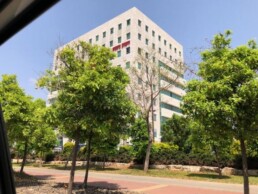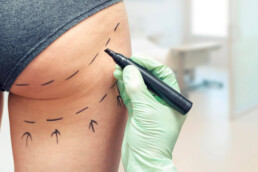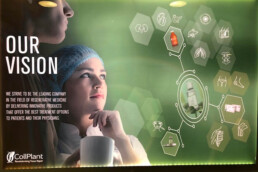Breast Implant Removal & Replacement With Your Own Fat
Today I saw a young woman who wanted her implants removed & replaced with her own fat. She is a busy Mum who also runs her own business and manages to find time to study for an advanced qualification!
The first thing she said about her implants was:
“I should have been more informed and thought more about my choices”.
Her story was that she had breast implants inserted early in 2017. She is a slight woman and went from an A cup to a DD as she had 460 cc round silicone implants inserted.
Unfortunately, the bigger the implant the greater the risk of post-operative complications. Sure enough, just 18 months later Megan had her implants removed and replaced due to the development of capsule contracture. In other words, her breasts became hard and painful due to formation of scar tissue around her implants.
Contact Us
Contact us to learn about which procedure is best for you.
Dr Allan Kalus Reports on 2018 Meeting of International Society of Aesthetic Plastic Surgeons
I recently attended the 2018 International Society of Aesthetic Plastic Surgeons (ISAPS) Symposium in Auckland. The main theme of these meetings was Autologous Fat Transfer to the breasts and I had the opportunity to present my results from the last five years. Also presenting at the meeting was Dr Emmanuel Delay from Lyon in France. The main points to come from the meeting were as follows:
When performed expertly, fat grafting to the breasts works extremely well.
The fat grafting procedure stimulates new blood vessel growth (neovascularisation) and causes stem cell differentiation. Both of these factors act to maintain and boost the volume effect of fat grafting.
In France, their technique of hybrid (or composite) breast augmentation has now replaced the use of anatomical or polyurethane implants.
Hybrid breast augmentation adds considerably to the result of breast augmentation for almost every patient, but it is especially useful for tuberous breasts, for asymmetry, for bony breasts and to prevent rippling.
Breast attractiveness depends more on cleavage than size.
Autologous Fat Transfer is also an excellent technique for breast reconstruction after mastectomy. Best results are obtained by a staged approach.
Because of the potential for growth of the fat graft, in France they use the phrase “Grow your own breast implants”.
In France they have done over 3,500.00 “lipo modelling” procedures to the breast and they have confirmed that it is safe and effective.
In reviewing the cases of fat transfer to the breast after partial mastectomy rate of breast cancer was only 2% whereas a recurrence rate of 10% would normally be expected. This is preliminary evidence that fat transfer to the breast has an anti-cancer effect.
At Fat Transfer Australia we are proud to have pioneered fat transfer to the breasts in Australia. We have developed our own technique with proven results. We have a team of excellent experienced surgeons as well as nursing staff, all of whom are dedicated to assuring that you obtain an excellent outcome from your procedure. We can advise you whether you are best suited to fat grafting on its own, a breast implant on its own or a hybrid (Composite) procedure.
Contact Us
Contact us to learn about which procedure is best for you.
Fat Grafting to the Buttocks: A Dangerous Procedure
At a recent conference of the Australasian Society of Aesthetic Plastic Surgeons in Auckland NZ, one topic of discussion was “buttock enhancement” sometimes called a Brazilian Butt Lift. What started as a demand from South America spread to North America and has now come to Australia. Women are requesting larger rounder buttocks. Buttock implants have not been particularly satisfactory so surgeons have been injecting fat into the buttocks. This has proven to be a highly dangerous procedure with a death rate of 1 in 3,000.
Extensive investigation has indicated that some of the fat that is injected can find its way into large veins just beneath the gluteal muscles and result in what is known as a “fat embolus”. The fat enters the vein and travels to the heart, where it blocks the flow of blood by occluding the right atrium.
There has been considerable discussion on how to avoid this tragic complication. It has been suggested that any fat grafting be performed away from the centre of the buttock where the gluteal veins are. It has been suggested that the fat be placed superficially just under the skin and never into the muscle. Unfortunately accidents can occur and, with a large volume fat grafting procedure, inadvertent injection of some fat into the muscle is a possibility with potentially devastating consequences.
The most sensible suggestion is to avoid fat grafting into the buttocks altogether. In fact, by liposuctioning the hips and the tissues around the buttocks, one can obtain a much more aesthetic and rounder looking buttock without the need for fat transfer in many cases.
Contact Us
Contact us to learn about which procedure is best for you.
How Long Do Fat Transfer Results Last?
Fat transfer to the breasts is an all-natural, organic way to improve your breast size and shape. The fat can be grafted strategically into the cleavage and upper pole in order to boost these areas. A great deal of research and development work has been done in recent years to ensure the fat cells that are grafted actually survive and grow in the breasts. Our aim is to have the grafted fat become incorporated into the breast and become part of the breast fatty tissue. Once it does this, it can be expected to last forever.
It is important to realise that when we gain weight, fat cells increase in size, not in number. Similarly, when we lose weight, fat cells decrease in size. This means that if you gain weight after your fat transfer procedure, you can expect your breasts to increase in size as the individual fat cells become larger. Because you have an increased number of fat cells in your breasts following the fat transfer procedure, it becomes much easier for your breasts to increase in size with even a very small weight increase.
The beauty of fat transfer to the breasts is that fat is removed from stubborn, unwanted areas such as the abdomen, hips and thighs and, after preparation, transferred into the breasts. This means there are now fewer fat cells in the donor sites and a greatly increased numbers of fat cells in the breasts. So even with a very modest weight gain you can expect your breasts to increase in size far more than the donor areas.
Of course, if you were to lose a significant amount of weight following the fat transfer procedure, you could expect your breast volume to decrease. This is because both your normal breast fat cells and the grafted fat cells will diminish in size.
Contact Us
Contact us to learn about which procedure is best for you.
Avant Now Covers Fat Transfer Procedures
Autologous Fat Transfer Approved for Breast Augmentation
As a long standing partner of ASPS, Avant is committed to supporting plastic surgeons to provide the highest quality plastic surgery care to all Australians.

We are writing to you to let you know that after consultation with ASPS, Avant has recently made some changes to our coverage for plastic surgeons which benefits both Avant members and their patients.
From 1 July 2018, cover will be included for transfer or injection of non-vascularised fat (including autologous fat transfer for both reconstructive and cosmetic breast surgery) for all plastic surgeons, without the need to seek endorsement from Avant.
Importantly, cover for these procedures is limited to practitioners who hold a FRACS, and excludes cosmetic practitioners who are not recognised surgical specialists.
Following the evidence presented to the Annual Scientific Meeting of The Royal Australasian College of Surgeons in Sydney in May 2018, AVANT (the predominant medical indemnity insurer for most of Australia’s plastic surgeons) has finally removed the restriction placed on its surgeons from performing breast augmentation using the patient’s own fat.
With the validation of autologous fat transfer to the breast in Australia, it is surprising that negative information continues to be published on the internet. It is clear that, in the past, most surgeons have been unable to perform this procedure because they have not been covered by their Medical Insurer. As a result they have not developed experience with the procedure and therefore favour the use of breast implants. It is clear that breast implants may be the preferred method of breast augmentation for some women (especially those desiring a very large increase in breast size), however autologous fat transfer is a far safer alternative, especially for the many women who desire a 1-2 cup size increase in breast volume with an enhanced cleavage and more fullness in the upper pole. The evidence is now clear that using correct techniques and with close attention to detail, a significant and permanent increase in breast volume and shape can be obtained for nearly every woman.
So what then has been some of this negative publicity?
From a Cosmetic Clinic in Sydney:-
“Please note that we strongly advise against fat transfer for breast augmentation. Although performed by some surgeons, it is widely held over the world that this procedure is not only likely to prove unsuccessful in the long-term when the injected fat disappears but more importantly it can produce areas of micro calcification on mammograms that could be difficult to differentiate from breast cancer.”
This is clearly incorrect information. They go on to say that large volume transfers have less chance of survival and that you may need serial transfers of smaller volumes of fat.
This is incorrect.
They go on to state that their “inability to guarantee permanency of correction has always been the major drawback of fat transfers”.
This may be true in their hands. Perhaps they are not using the correct technique?
And what about a Cosmetic Surgery Centre based in Melbourne? They state:-
“The main reasons Australian Plastic Surgeons have not yet embraced fat transfer as a primary breast augmentation procedure include:-
Not enough augmentation potential from existing fat transfer procedures – a high percentage of the fat does not “take after the transfer”.
Requires too many repeat procedures to get a really good result.
Results are often minimal per procedure and procedures can be quite involved and often costly to the patient.
Potential concerns about problems at the donor site.
Possible infections or complications at the injection site including notable differences between breasts.
Difficulty of removing the transferred fat at a later date if there is a complication.
This is “Fake News”!
Having performed several hundred fat transfer procedures, these statements do not correlate with our own experience.
In fact, we find that a high percentage of the fat does “take” following transfer; that most patients require only 1 procedure to get a really good result; that results are certainly not “minimal” per procedure; that there are very few problems with the donor site (assuming correct technique is used in the harvesting); infections are almost non-existent; we have never had a situation where we have had to remove transferred fat!
These surgeons go on to state that the fat cells may form nodules or lumps – or expand unevenly – with any later patient weight gains.
With adequate attention to surgical technique, the formation of lumps can be avoided and we have never had uneven expansion!
According to these surgeons:-
“Implants are still the preferred method of most Australian plastic and cosmetic surgeons, for reasons of predictability, size and shape control and overall results”.
Having performed over 5000 breast implant operations, I can state unequivocally that, with experience in the technique of fat transfer, implants are no longer my preferred method. Excellent predictability and improved size and shape control is obtained by autologous fat transfer. Furthermore breast implants are associated with all sorts of problems and the only thing that is predictable is that further surgery is likely to be required to correct complications.
I have only provided a few examples above to illustrate some of the negative comments which cause unnecessary concern to many women.
With 20,000 breast implant surgeries performed in Australia each year we have a situation where tens of thousands of women will require their implants to be removed due to a long list of well-known complications. News Corporation (publishers of The Sunday Herald in Sydney) have recently started a campaign to ensure that women who require expensive surgery for breast implant removal have the costs of their surgery reimbursed by the implant manufacturer. Breast implants with a textured surface have now been linked with a disease known as Anaplastic Large Cell Lymphoma (ALCL) which is an indolent cancer of the capsule surrounding the implant.
Allan Kalus
FRCS, FRCS(Ed), FRACS
Contact Us
Contact us to learn about which procedure is best for you.
Scientists Identify Genes Responsible for Collagen
The Medical Director of FTA, Dr Allan Kalus, recently returned from a trip to Israel where he visited a High Tech Bio Engineering company called COLLPLANT.

Scientists at this company have identified the genes responsible for the different types of human collagen. These genes have been artificially manufactured and inserted into the genome of tobacco plants. The tobacco plants are then grown in controlled conditions and it is able to extract the human collagen from these tobacco plants.
The company are currently investigating uses for their synthetic human collagen. They already have FDA approval to inject their collagen into the elbow for the treatment of tennis elbow.
The scientists at Collplant have discovered that the human collagen forms a matrix which encourages the ingrowth of blood vessels and therefore supports tissue healing.
The scientists at Collplant and Dr Kalus discussed the possibility of using synthetic human collagen as a matrix for fat cells to enhance fat cell survival and longevity.
Contact Us
Contact us to learn about which procedure is best for you.





